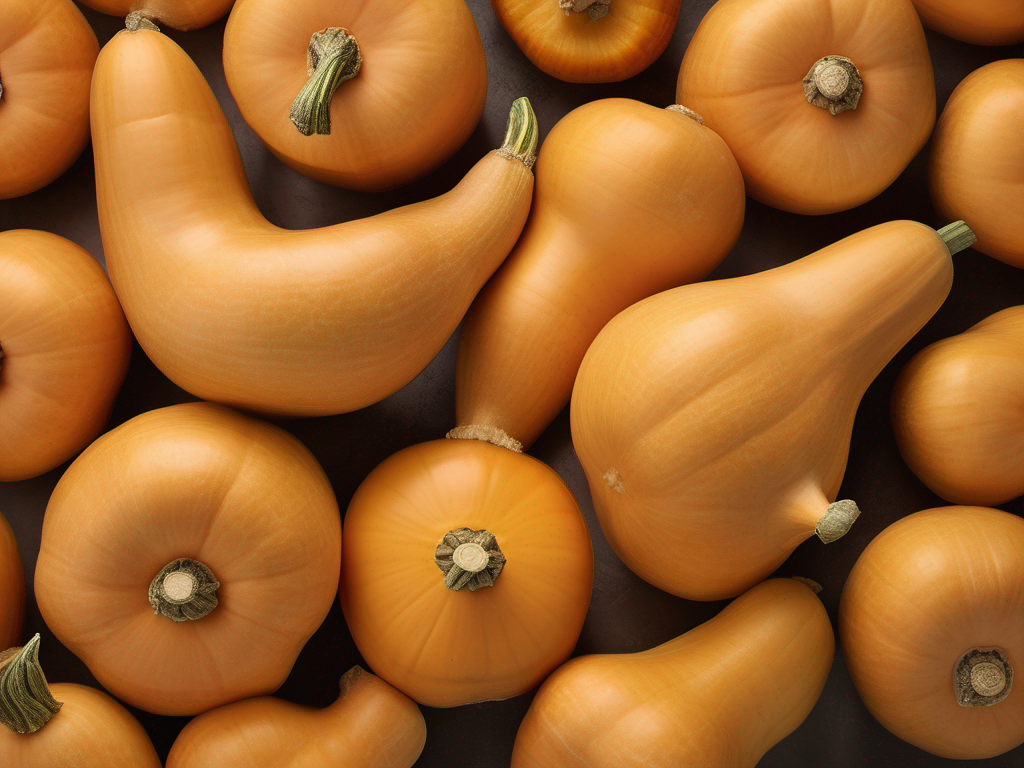
The Best Way to Store Butternut Squash to Prevent Spoilage
Get Your Free Food Safety Cheat Sheet
30 most common foods with instant answers. Print it and stick it on your fridge—completely free!
The Best Way to Store Butternut Squash to Prevent Spoilage
Butternut squash is a delicious and versatile vegetable that can be enjoyed in a variety of dishes, from soups and stews to roasted sides and even desserts. To make the most of this nutritious and flavorful ingredient, it's essential to store it properly to prevent spoilage and maintain its freshness. In this guide, we'll explore the best practices for storing butternut squash to help you enjoy its goodness for longer periods. (Butternut squash)
Understanding Butternut Squash
Before diving into storage tips, let's first understand butternut squash and its characteristics. Butternut squash is a winter squash variety known for its sweet, nutty flavor and creamy texture. It is rich in essential nutrients like vitamins A and C, as well as fiber and antioxidants, making it a healthy addition to your diet.
Butternut squash is typically harvested in the fall and can be stored for several months under the right conditions. Proper storage is crucial to prevent premature spoilage and maintain the squash's quality.
Factors That Affect Butternut Squash Storage
Several factors can influence the shelf life of butternut squash and its overall quality. Understanding these factors can help you make informed decisions when storing this vegetable:
-
Temperature: Butternut squash should be stored at a cool, dry, and well-ventilated place. Avoid exposure to extreme temperatures or direct sunlight, as this can cause the squash to spoil more quickly.
-
Humidity: The ideal humidity level for storing butternut squash is around 50-70%. High humidity can lead to mold growth, while low humidity can cause the squash to dry out.
-
Damage: Inspect the squash for any signs of damage, cuts, or bruises before storing. Damaged areas are more prone to mold and decay, so it's best to use these squash first.
-
Storage Container: Choose a storage container that allows for good air circulation, such as a wire or wooden crate. Avoid storing butternut squash in plastic bags or airtight containers, as these can trap moisture and promote spoilage.
Best Practices for Storing Butternut Squash
Now that we've covered the basics, let's explore the best practices for storing butternut squash to maximize its shelf life and quality:
1. Harvesting and Curing
Proper harvesting and curing are essential steps to ensure that butternut squash stays fresh for an extended period. Follow these guidelines:
- Harvest the squash when the skin is firm and fully mature.
- Cure freshly harvested squash in a warm, dry place for 10-14 days to help harden the skin and improve shelf life.
2. Choosing the Right Storage Location
Select a suitable storage location that meets the following criteria:
- Cool and Dry: Store butternut squash in a cool, dry area with good air circulation, such as a pantry, cellar, or unheated room.
- Temperature: Maintain a consistent temperature between 50-55°F (10-13°C) for optimal storage conditions.
- Avoid Refrigeration: Do not refrigerate whole butternut squash, as the cold temperatures can cause the squash to deteriorate more quickly.
3. Proper Handling and Inspection
Handle butternut squash with care and regularly inspect them for any signs of spoilage:
- Handle Gently: Avoid dropping or stacking heavy objects on the squash, as this can cause bruising and damage.
- Check for Mold: Discard any squash with mold growth or soft spots to prevent the spread of decay.
- Rotate Stock: Use the oldest squash first to prevent any from going bad before you can enjoy them.
4. Extended Storage Options
If you have a large harvest or want to store butternut squash for an extended period, consider the following options:
- Freezing: Peel, seed, and cut the squash into cubes before blanching and freezing for long-term storage.
- Canning: Preserve butternut squash by canning it in a pressure canner for shelf-stable convenience.
Conclusion
By following these best practices for storing butternut squash, you can enjoy this nutritious vegetable throughout the fall and winter months. Remember to harvest and cure the squash properly, choose the right storage location, handle them with care, and explore extended storage options for long-term preservation. With these tips, you can prevent spoilage and savor the delicious flavor of butternut squash in your favorite recipes. [Learn more about butternut squash](/food/butternut squash) and get ready to enjoy its culinary delights while maintaining food safety and freshness. (Butternut squash)
Authoritative Food Safety References
These agencies and university labs inform every tip and health precaution we publish.
USDA FoodKeeper – Cold Storage Guidelines
Official refrigerator, freezer, and pantry timelines maintained by the U.S. Department of Agriculture.
Visit USDA FoodKeeperFDA Produce Safety Rule & Grower Guidance
Field-to-fridge handling practices that prevent contamination of fruits, vegetables, and leafy greens.
Visit FDA Produce SafetyCDC Foodborne Illness Prevention Hub
Surveillance-backed guidance on pathogens, symptoms, and steps to reduce foodborne illness risk.
Visit CDC Food SafetyUC Davis Postharvest Technology Center
University research detailing optimal storage atmospheres for produce after harvest.
Visit UC Davis PostharvestPenn State Extension – Home Food Preservation & Safety
Peer-reviewed extension bulletins on safe canning, chilling, and reheating practices.
Visit Penn State ExtensionGet Your Free Food Safety Cheat Sheet
30 most common foods with instant answers. Print it and stick it on your fridge—completely free! Want more? Upgrade to the complete guide with 70+ foods.
Scan your food directly and get instant safety info using our AI-powered camera feature.